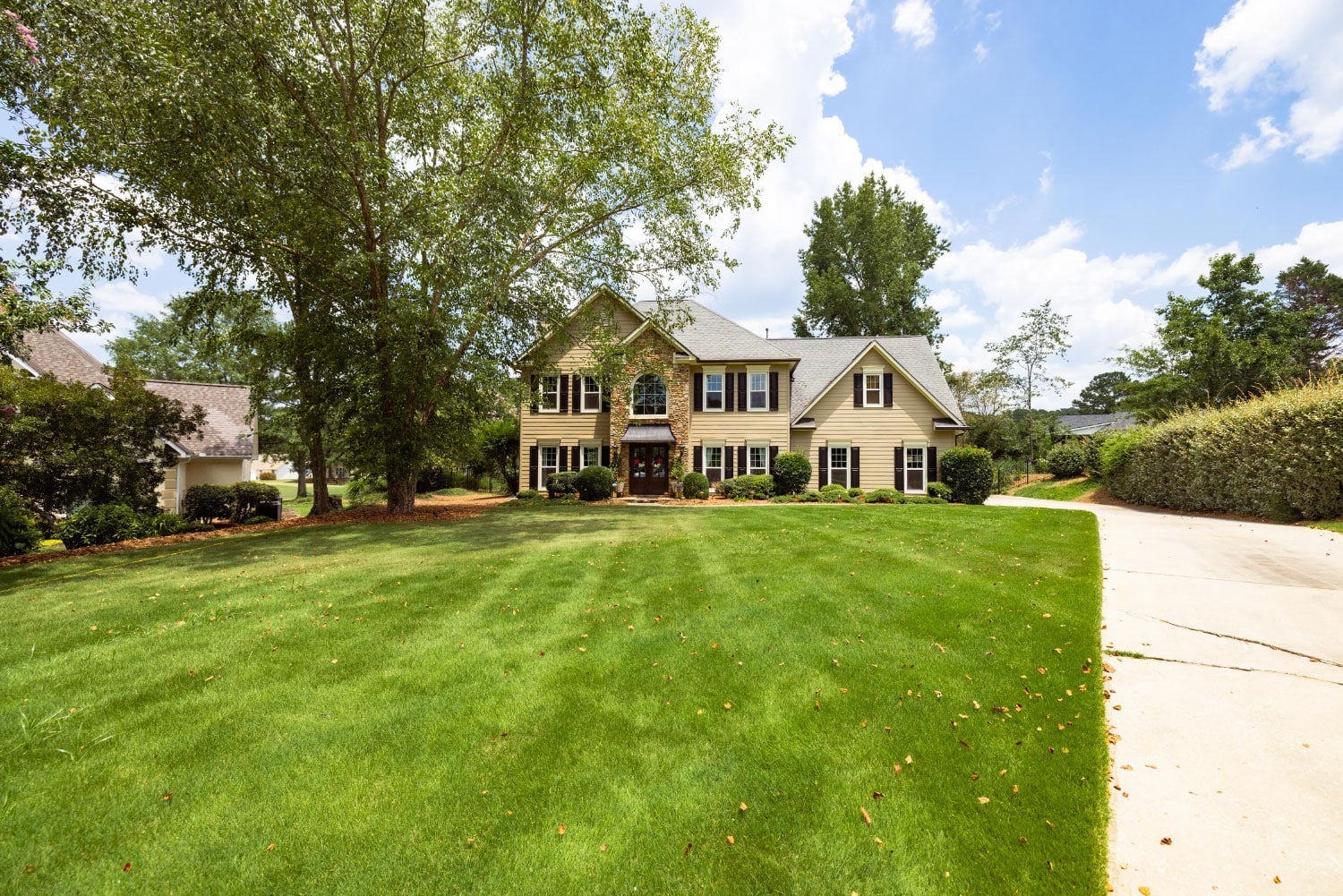When the long, hot, and arduous days of summer give way to the cool days of autumn, there isn’t a sight more welcomed than the beautiful mosaic of a landscape full of trees with leaves of red, yellow, orange, and everything in between. It’s not uncommon to take a quick trip from metro-Atlanta to the mountains to really take the colors in. You may be wondering where those colors come from. It all starts with why leaves fall.
Why Do Some Trees Lose Their Leaves?
Trees that lose their leaves are called deciduous trees, and they generally have wide leaves that come in all shapes and sizes. This is in contrast to conifers, which typically have cones (like pine cones), needles (like pine needles of the fronds of a cypress), and a conical shape. While conifers maintain a majority of their needles, deciduous trees sacrifice theirs.
As days get shorter and temperatures cool, energy production decreases, and deciduous trees start focusing on storage more than production. When leaves are formed, they include a joint at the base of their petiole (the little stem on leaves). The purpose of that joint is to facilitate leaf drop. As the weather changes, a barrier is built where that joint is. Eventually it weakens to the point where strong winds and heavy rains knock them off, but why do they change colors before that?
Why Do Leaves Turn Yellow, Orange, and Red?
During the growing months, leaves reflect the color green because chlorophyll is green, but in the fall, trees stop producing chlorophyll. Chlorophyll is a compound created in leaves; its chief responsibility is to harvest sunlight, using that energy to convert carbon dioxide and water into usable energy. When chlorophyll’s job is done, plants quit producing it. As it degrades, it gives way to the yellow and orange pigments of carotene and xanthophyll. You may be familiar with carotenes; they create the orange color in carrots.
Red colors require an additional step. The compounds reflecting red are called anthocyanins, and they’re formed by a reaction that occurs when excess sugars are trapped in the leaves during the process of senescence (deterioration). Anthocyanins are also what causes the red coloration in red grapes and red varieties of apples. Trees like dogwoods and certain maples are most likely to produce this red coloration because of the sugar content in their saps.
Important Takeaways:
- Nothing signifies fall quite like leaves turning vibrant reds, oranges, and yellows.
- This process starts as deciduous trees begin the process of losing their leaves for winter. As days shorten and temperatures cool, deciduous trees place their focus on energy storage rather than energy creation.
- During the growing season, leaves reflect green because of chlorophyll. When they stop producing chlorophyll, it degrades, giving way to xanthophylls, carotenes, and leftover sugars that convert to anthocyanins. It’s these compounds that reflect yellows, oranges, and reds, respectively.
- While a combination of the species in your yard and the weather conditions are responsible for the colors your trees turn and how vibrant they are, Nature’s Turf can help provide fertilization and pest control for your ornamental shrubs and trees up to 15 feet. If we can help keep them healthy, providing decades of fall color, call us at 678-831-6343, or email us at info@naturesturf.com.








